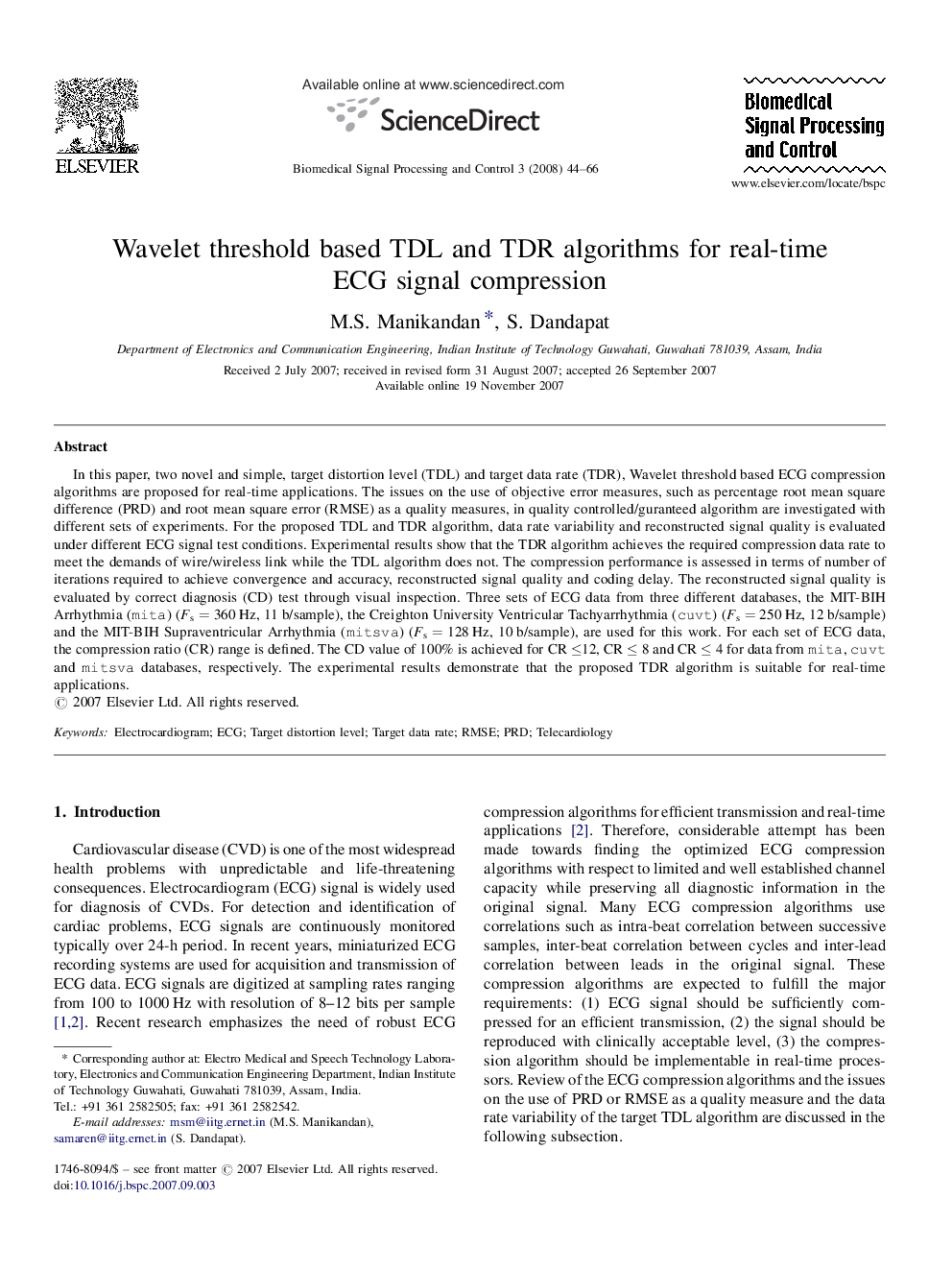| Article ID | Journal | Published Year | Pages | File Type |
|---|---|---|---|---|
| 558307 | Biomedical Signal Processing and Control | 2008 | 23 Pages |
In this paper, two novel and simple, target distortion level (TDL) and target data rate (TDR), Wavelet threshold based ECG compression algorithms are proposed for real-time applications. The issues on the use of objective error measures, such as percentage root mean square difference (PRD) and root mean square error (RMSE) as a quality measures, in quality controlled/guranteed algorithm are investigated with different sets of experiments. For the proposed TDL and TDR algorithm, data rate variability and reconstructed signal quality is evaluated under different ECG signal test conditions. Experimental results show that the TDR algorithm achieves the required compression data rate to meet the demands of wire/wireless link while the TDL algorithm does not. The compression performance is assessed in terms of number of iterations required to achieve convergence and accuracy, reconstructed signal quality and coding delay. The reconstructed signal quality is evaluated by correct diagnosis (CD) test through visual inspection. Three sets of ECG data from three different databases, the MIT-BIH Arrhythmia (mita) (Fs=360Fs=360 Hz, 11 b/sample), the Creighton University Ventricular Tachyarrhythmia (cuvt) (Fs=250Fs=250 Hz, 12 b/sample) and the MIT-BIH Supraventricular Arrhythmia (mitsva) (Fs=128Fs=128 Hz, 10 b/sample), are used for this work. For each set of ECG data, the compression ratio (CR) range is defined. The CD value of 100% is achieved for CR ≤≤12, CR ≤≤ 8 and CR ≤≤ 4 for data from mita, cuvt and mitsva databases, respectively. The experimental results demonstrate that the proposed TDR algorithm is suitable for real-time applications.
